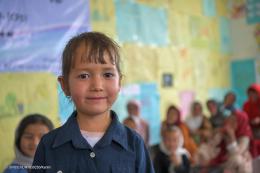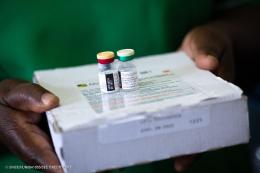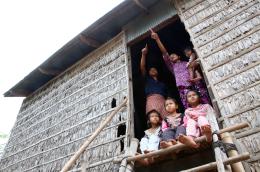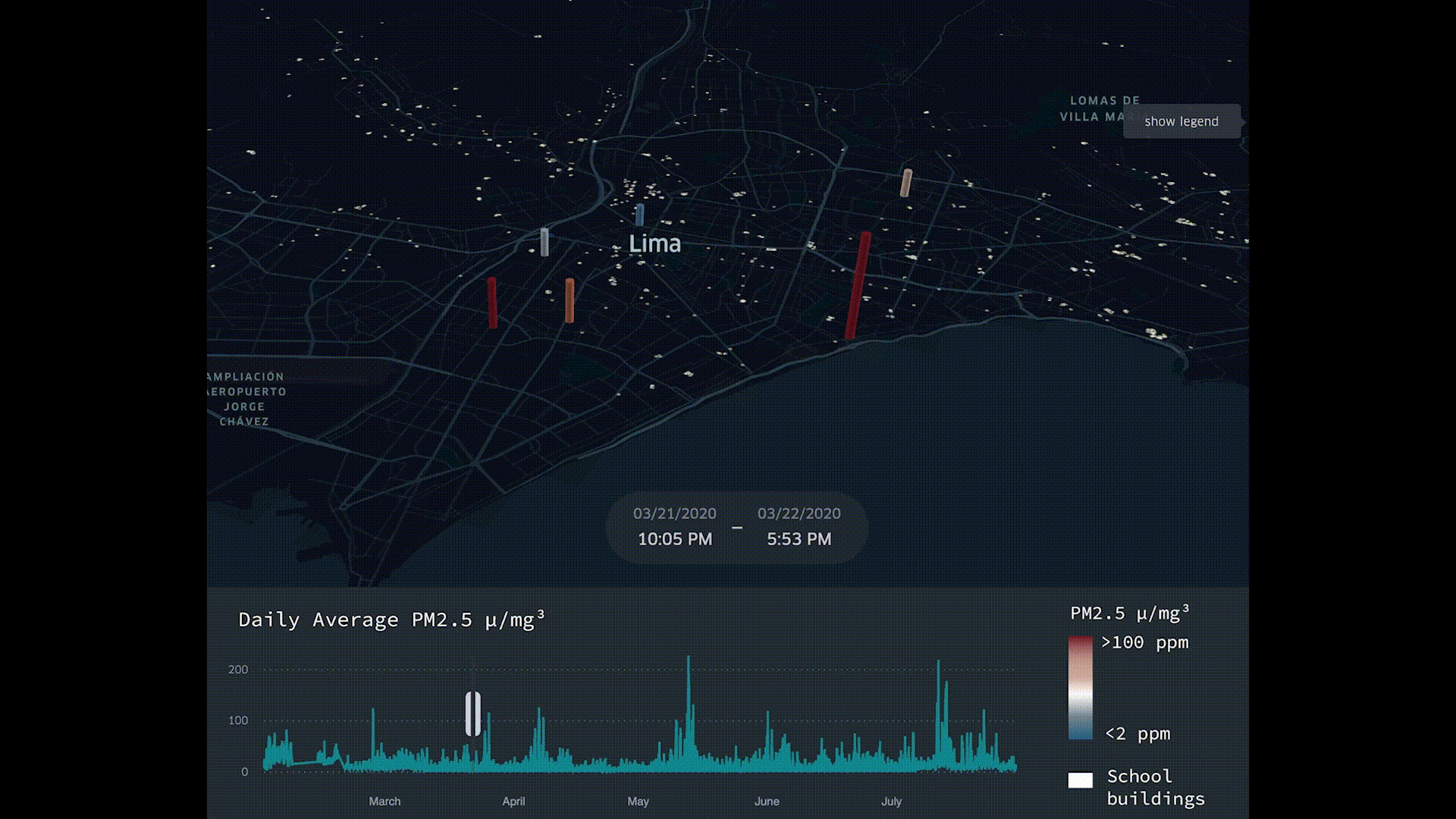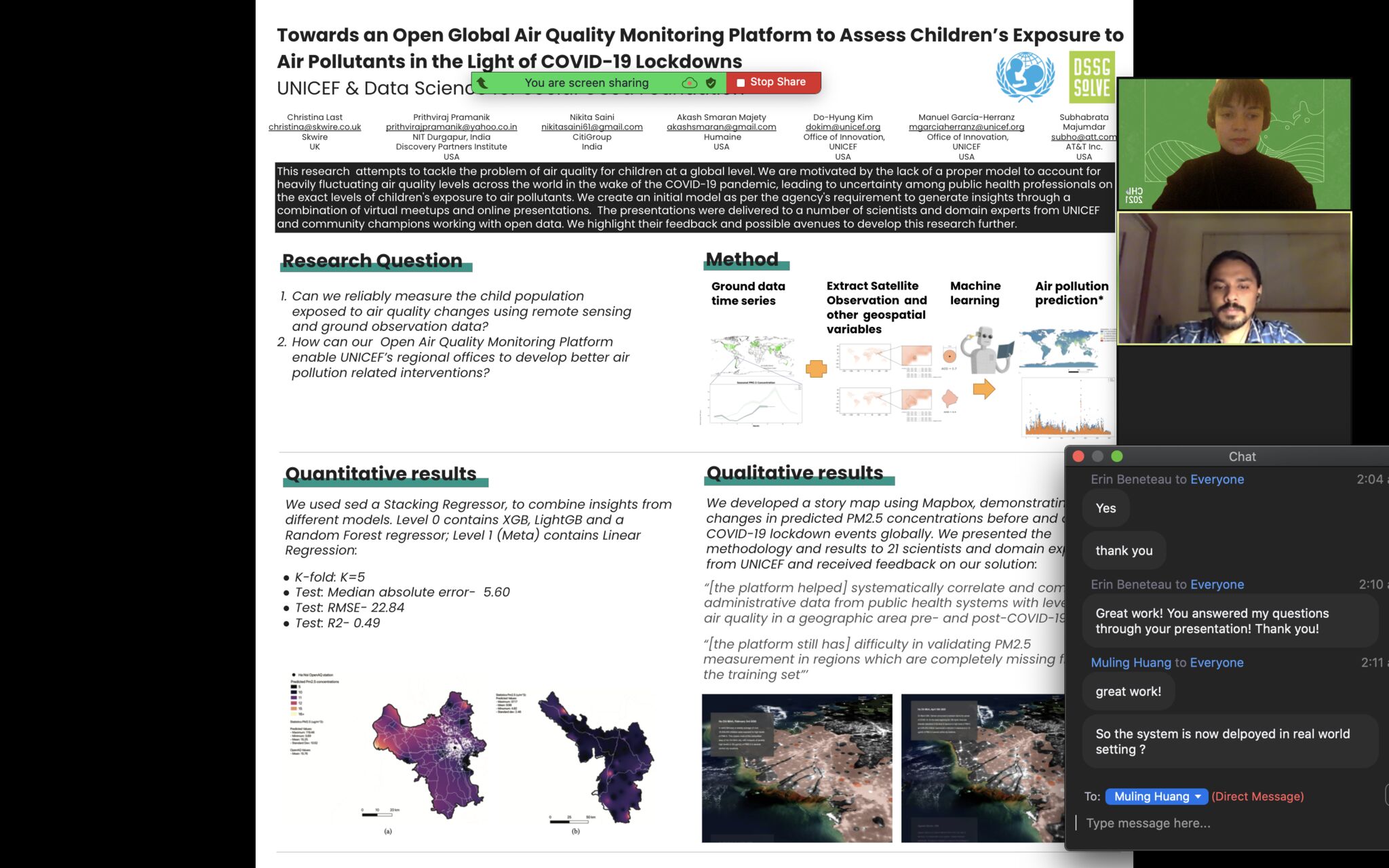
What is unique about your solution and how is it different from what currently exists?
AQAI leverages the availability of high-quality sensor data from open-source research projects like AirQo and OpenAQ.
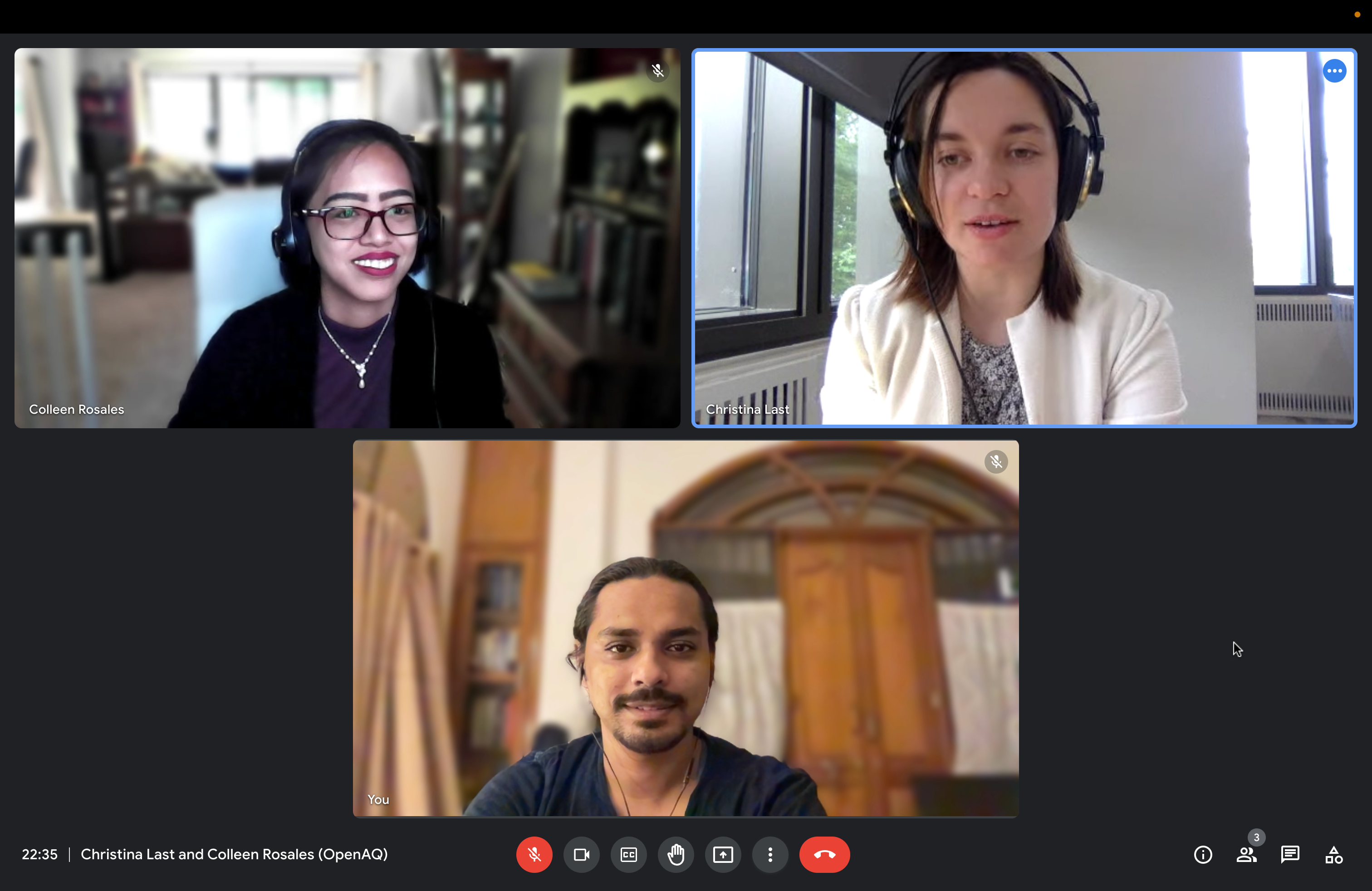
This is an improvement over current approaches, which only provide a paid API for Air Quality Monitoring, limiting the ability of resource-constrained local policymakers and active community members to advocate for environmental justice. Furthermore, AQAI aims to be the first organization to do open-source global air pollution exposure measures, enabling policymakers and health officials anywhere in the world to use our exposure metrics to assess the impact of air pollutants on populations and the climate. This methodology is an improvement over current approaches to air pollution exposure measures, as we can generate population-weighted annual average concentrations which give greater weight to the air pollution experienced where most people live than local sensor availability does.
Why does being Open Source make your solution better?
AQAI’s open-source tool can give governments, NGOs, and charities the ability to assess exposure to climate-related pollutants to identify and prioritize the most at-risk populations for air pollution reduction interventions, enabling data-driven, transparent policymaking. We hope to expand our geographic reach by leveraging partnerships made through UNICEF Regional offices globally, prioritizing those which track progress toward air-pollution strategic monitoring goals (e.g., Mongolia, Vietnam, Kyrgyzstan, and Belize). Initially, we intend to focus on growing our regional presence with UNICEF Latin America.
How did you come up with your solution and what inspired you to form your company?
We have a team of geospatial experts, machine learning specialists, and data scientists who can use their technical skills to create positive change at the grassroots level. Most importantly, we are located remotely around the globe and have worked together since 2020, right across the pandemic. Our work started as a pro-bono effort with UNICEF, where we volunteered to address air quality issues in low-resource countries.
Tell us more about your team. What makes your team diverse?
Christina Last is the CTO of AQAI and is currently earning a Master's in Urban Science at MIT, studying the impact of air pollution exposure through pedestrian modeling. Prithviraj Pramanik is the CEO of AQAI and is a Ph.D. Candidate and a Fulbright Fellow who has studied cost-effective urban air quality measurement techniques extensively.
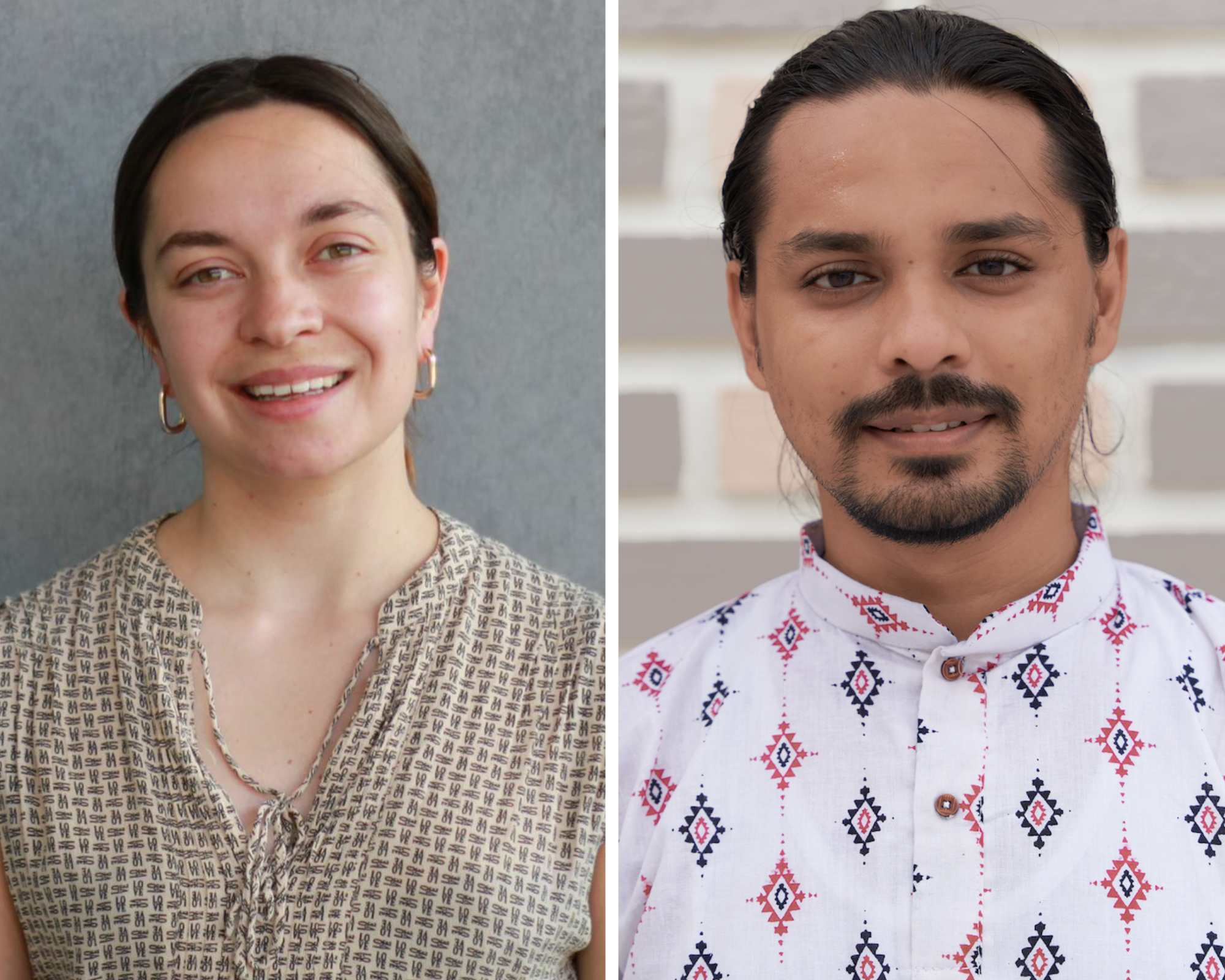
We value diversity to help us frame our technical challenges with multiple lenses. We are diverse in our backgrounds, experiences and perspectives, but united by a common goal of doing social good with our technical capabilities to improve the quality of lives for future generations.
What do you plan to do with UNICEF's Venture Fund investment and how will you use that to leverage raising follow-on investment?
Beyond the scope of this application, we believe policymakers globally will benefit from AQAI’s suite of environmental pollution impact tools, as it will enable policymakers to build end-to-end environmental and health impact assessment workflows, each being able to attribute impact to direct policy changes made at the local, national and regional level.
What challenges are you currently facing in building your solution and/or startup?
The most significant risk in a frontier project like this is the issue of awareness and complexity in adopting new tools among end users. To address these challenges, we have already started stakeholder sensitization with UNICEF, the world’s leading organization working on children’s safety and well-being. Furthermore, since we are working on data-driven models, we must have ground data for remote locations to generalize our models and maintain high fidelity across the ground sensor locations. In this instance, we are exploring partnerships with UNICEF Country Offices to enable the collection of ground data from those places where open-sourced air quality ground data are unavailable. This partnership thus helps bring this technology to these remote areas and helps in generating high-fidelity models and explainability. Often these remote locations are resource-constrained, so by engaging with local policymakers and active community members, our approach can further advocate environmental justice.
How can others support you in working towards overcoming these challenges?
Work with us. We are looking to hire for the following roles: Front end developer, Product Manager, User Experience Designers, and Data Engineer.
Test our tools. We are looking for users! If you are an open-source contributor, please feel free to engage with us through our GitHub organization and our slack organization AirqualityAI.slack.com.
Partner with us. If you are an organization that would benefit from partnering with us, please contact our team. We are particularly interested in working with organizations on the following:
1) Generating pollution monitoring tools for Governments to prioritize environmental and health interventions. The number of workdays lost to air pollution-related illness in 2015 was $2.1 billion, increasing to $3.7 billion in 2060.
2) Assessing air pollution to improve global crop yields. Less polluted agricultural regions result in improved export competitiveness and thus economic gains, resulting in $2.7 billion in annual savings globally.
3) Incorporating air pollution prediction and associated exposure and health metrics into insurance premiums. The price people are willing to pay each year to not have their health impaired is rising from less than $500 per person in 2015 to as much as $2,800 in 2060.
Related Stories

AGUA: Revolutionizing Global Collaboration for Funding Transparency (with Growth Graduate Atix Labs)

